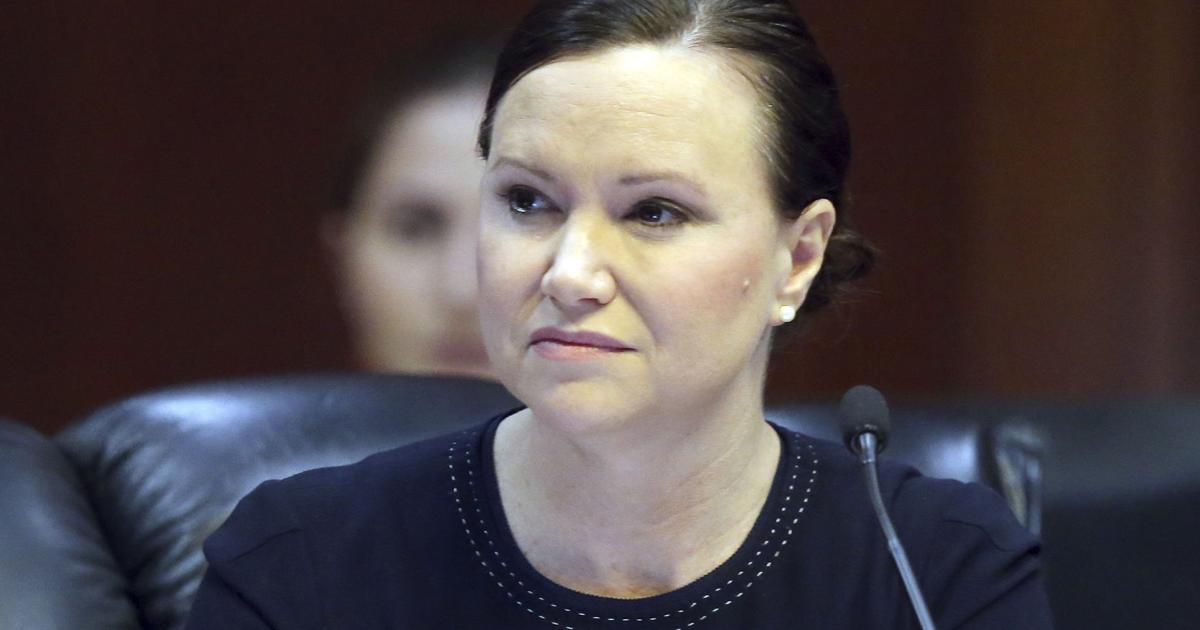|
China |
India |
Indonesia |
Japan |
As one of the first 10 parties to the 1992 UN Framework Convention on Climate Change, China is an active participant in global climate co-operation and has been further promoted from an important participant to a key leader. China abides by the basic framework defined by the international community under the Paris Agreement, and is committed to promoting the establishment of a fair, reasonable and equitable global governance system.
In September 2020, at the 75th session of the UN General Assembly, President Xi Jinping announced that “China will scale up its intended nationally determined contributions by adopting more vigorous policies and measures. We aim to have carbon dioxide emissions peak before 2030, and to achieve carbon neutrality before 2060.” The goal has been written into the outline of the 14th Five-Year Plan for National Economic and Social Development, and Vision 2035 of the PRC issued in March 2021. China will accelerate the construction of its legal system related to carbon peak and carbon neutrality.

Partner at Jingtian & Gongcheng in Beijing
Tel: +86 10 5809 1022
Email: yao.jian@jingtian.com
Carbon neutrality means that the amount of carbon dioxide produced is offset by afforestation, energy conservation and emissions reduction. According to the Implementation Guideline on Carbon Neutrality for Large-scale Activities (Trial) issued by the Ministry of Ecology and Environment in 2019, carbon neutrality refers to offsetting the greenhouse gas emissions of large-scale activities by purchasing carbon allowances or carbon credits, or by generating carbon sinks through newly built forestry projects.
With the purchase and sale of relevant carbon allowances and carbon credits, the development of China’s carbon emission rights market has gone through the process of local pilot projects (in Beijing, Shanghai, Guangzhou, Shenzhen, Hubei, Chongqing, Tianjin and Fujian), and gradual exploration of a unified opening of the national carbon emission rights market. China’s carbon market consists of the Credit Emission Allowance (CEA) and the China Certified Emission Reductions (CCER) markets.
CEA market
The Administrative Measures for Carbon Emission Right Trading (Trial) (Administrative Measures for Trading), issued by the Ministry of Ecology and Environment on 31 December 2020 and effective as of 1 February 2021, standardise national carbon emission rights trading and related activities, including carbon emission allowance allocation and settlement, carbon emission rights registration, trading and settlement, greenhouse gas emission reports and verification, and the supervision and management of the above-mentioned activities.
According to the Administrative Measures for Trading, the Ministry of Ecology and Environment promulgated the Administrative Rules for Carbon Emission Rights Registration (Trial), the Administrative Rules for Carbon Emission Rights Trading (Trial), and the Administrative Rules for Carbon Emission Rights Settlement (Trial) on 14 May 2021, which further detailed the specific operations in the registration, trading and settlement of carbon emission rights.
Combined with current laws and regulations, the trading mechanism of a CEA market is briefly introduced as follows:
CEA is a carbon emission rights index that the state distributes free of charge (or paid distribution will be introduced, according to national requirements, later) to key greenhouse gas emission entities through provincial ecology and environment departments.
Enterprises that meet the following conditions will be included in the list of key emission entities of the competent provincial ecology and environment departments: (1) Belong to an industry covered by the national carbon emission rights trading market; and (2) produce annual greenhouse gas emissions of up to 26,000 tonnes of carbon dioxide equivalent.
Key emission entities included in the national carbon emission trading market will no longer participate in the local carbon emission rights trading pilot market. At present, the first batch of domestic enterprises that have the right to enter the national carbon emission rights trading market are qualified power generation enterprises.
Key emission entities can open accounts and conduct related business operations in the national carbon emission rights registration system. Key emission entities are required to fulfil their obligations within the prescribed time limit, use their CEA to offset their actual carbon emissions and complete the settlement of CEA.
If the carbon emissions of key emission entities with allowances is less than the CEA allocated by the state, the excess can be sold as products. If their carbon emissions exceed the CEA allocated by the state, the insufficient part shall be purchased from the carbon trading market. Trading entities can trade CEA through the national carbon emission rights trading system by transfer agreement, one-way bidding or other compliant ways.
Key emission entities shall, according to the technical specification for greenhouse gas emission accounting and reporting formulated by the Ministry of Ecology and Environment, prepare a greenhouse gas emission report of their own for the previous year, specify the emissions, and report to the provincial-level ecology and environment department where the production and business premises are located. Key emission entities shall settle the CEA of the previous year within the time limit.
CCER market
CCER refers to the voluntary greenhouse gas emission reductions recorded on the national trading registration system after the effects of renewable energy, forestry carbon sinks, methane utilisation and other projects in China are quantified and certified. According to the Interim Measures for the Administration of Voluntary Greenhouse Gas Emission Reduction Trading, promulgated in 2012, the state requires the filing of voluntary greenhouse gas emission reduction trading.
The projects participating in voluntary emission reduction trading are filed and registered with the competent national authorities, and the emission reductions generated in the projects are filed and registered with the competent national authorities and traded in trading agencies filed with these authorities.
Enterprises registered in China may apply for voluntary greenhouse gas emissions reduction projects and the filing of emissions reduction. Agencies, enterprises, organisations and individuals at home and abroad may participate, as CCER does not have many restrictions on trading entities.
CCER can offset CEA to a certain extent. According to article 29 of the Administrative Measures for Trading, key emission entities can offset the settlement of CEA with CCER every year, and the offset ratio shall not exceed 5{e421c4d081ed1e1efd2d9b9e397159b409f6f1af1639f2363bfecd2822ec732a} of the CEA to be settled. The CCER used for offset shall not come from emission reduction projects included in the allowance management of the national carbon emission trading market. Up until now, CCER has not been included in the national CEA trading market as a tradable product.
Other voluntary markets
Some enterprises are also actively participating in the international voluntary emission reduction markets. The systems with high recognition include the voluntary carbon standard, the climate action reserve standard, the offset project standard of Chicago Climate Exchange and the gold standard.
The increase in the number of categories traded in the voluntary carbon markets indicates that the domestic and international mandatory compliance sectors are gradually expanding the acceptance of the voluntary emission reduction market, which will contribute to its development, instead of squeezing it.
Future prospects
The national carbon trading market started well in the first year, but it is in the process of development and improvement. The following three aspects in the future are worthy of further observation.
Continue to improve the relevant legislation. The policy documents on China’s carbon market from local pilot to national market are all guidance opinions, notices, etc. It is necessary to improve relevant regulations to provide a normative basis and guarantee for the carbon trading market at the legal level.
Expand the coverage, participants and asset types. At present, the national carbon market only includes the power generation industry, only emission control enterprises are allowed to open accounts, and tradable carbon assets only cover the carbon allowance and CCER with few market stocks.
A solid foundation of the data accounting work of petrochemical, chemical, building materials, steel, nonferrous metals, paper making, aviation and other high-emission industries has been established. After the industry standards and technical specifications are improved, they should be included in the carbon market as soon as possible to expand the scale of participants.
The market may gradually be opened to non-emission control enterprises, individuals, financial institutions and carbon service providers to promote diversified development and improve market vitality. The competent authorities are actively preparing for the restart of CCER, and the trading of derivative products such as futures, options and swaps other than spot goods can be explored.
Improve the liquidity. The price of emission rights in China’s carbon market is relatively low, and the cost of emission reduction is relatively high. For regional and national carbon trading in the first year, their activities are mainly concentrated in the performance period, and the trading volume in other periods is insufficient, leading to the low activity of enterprises. With the expansion of the national market and diversification of participants and products, activity is expected to increase.

Jingtian & Gongcheng
34/F, Tower 3, China Central Place
77 Jianguo Road, Chaoyang District
Beijing – 100025, China
Tel: +86 10 5809 1000
Email: jingtianbj@jingtian.com
www.jingtian.com
To become real from being a mere global buzzphrase, carbon neutrality would require comprehensive strategies and concerted actions across all sectors at different levels across the world. The significance of such actions may be understood from US President Joe Biden’s statement at the CoP26 climate meeting in Glasgow: “None of us can escape the worst of what’s yet to come if we fail to seize this moment.”
Carbon neutrality, or net-zero emissions, refers to balancing anthropogenic greenhouse gas emissions with anthropogenic removal or offsetting of the greenhouse gases so that the net effect is zero emissions. In simple terms, this requires two different approaches, one focusing on reducing emissions by adopting cleaner, greener and efficient technologies, and second by removing the emitted greenhouse gases by creating carbon sinks.

Partner
LexOrbis in New Delhi
Tel: +91 98111 61518
Email: manisha@lexorbis.com
India, a signatory to the Paris Agreement that aims to limit global warming to 1.5 degrees Celsius as compared to pre-industrial levels, has made an ambitious pledge of achieving net-zero carbon emissions by 2070 at the CoP26 meeting. Becoming a net-zero will require huge efforts in different sectors and at different levels. However, setting up such goals is the need of the hour to gear up and attain carbon neutrality by adopting concrete and effective methods without ignoring the required economic growth for a developing country with the second-largest population in the world.
Reports from the Intergovernmental Panel on Climate Change (IPCC) suggest that human activities have already warmed the planet by 1 degree Celsius since the pre-industrial era. India has always remained committed to addressing climate change challenges, and has considered it a key national priority for more than two decades. The country launched its National Action Plan on Climate Change (NAPCC) in 2008 with eight different national missions spread across different sectors to focus on sustainable development.
A large number of actions and programmes under different missions have been launched to mitigate and neutralise carbon emissions. Among them are solar energy, wind energy, a green energy corridor project, an international solar alliance, energy efficiency standards for appliances, an energy conservation building code, fuel consumption standards, a national smart grid mission, a framework for energy-efficient economic development, an energy efficiency financing platform, a national afforestation programme, a national clean air programme, a climate change action programme, a smart cities mission, a national policy on biofuels, fuel efficiency norms, a national electric mobility mission plan, faster adoption and manufacturing of (hybrid and) electric vehicles in India, a steel scrap recycling policy, and establishment of the National Green Tribunal.

Managing Associate at LexOrbis
in New Delhi
Tel: +91 9889003585
Email: pradeep.kumar@lexorbis.com
All these missions, policies and programmes are implemented through different ministries and departments, and are co-ordinated by the Ministry of Environment, Forest and Climate Change. Given the emerging climate change reality, the federal government has focused on enhancing the required actions for adaptation, mitigation and capacity building, and is planning and launching new initiatives like constituting a Prime Minister’s Council and Executive Council on climate change for constant review of all national missions.
The responsibility and commitment to climate change from India are evidently reflected in the conscious actions of Indian companies. Even before the government submitted nationally determined contributions (NDCs), many Indian companies pledged to adopt measures and strategies to achieve carbon neutrality. Many other companies are synchronising with the 2050 Pathways Platform, Climate Neutral Now, RE100, EP100 and EV100 to minimise and mitigate the effects of carbon footprints and come up with models for others to follow.
India has been projected as the fourth-biggest emitter of greenhouse gases. However, it is equally important to appreciate that, considering per capita greenhouse gas emissions, India is in 134th position. There seems to be no rationale in the projection as it ignores all other facts, particularly greenhouse gases emitted by countries during economic development in the past century.
From 1870 to 2019, India’s contribution towards total global greenhouse gas emissions was less than 4{e421c4d081ed1e1efd2d9b9e397159b409f6f1af1639f2363bfecd2822ec732a}. Even currently, India emits only 7{e421c4d081ed1e1efd2d9b9e397159b409f6f1af1639f2363bfecd2822ec732a} of global emissions, despite having 17{e421c4d081ed1e1efd2d9b9e397159b409f6f1af1639f2363bfecd2822ec732a} of the world population. Owing to its huge population, India emitted 2.5MT (metric tonnes) of CO2 per head, lower than other major emitters of greenhouse gases in 2018. Emissions of greenhouse gases from the US, Russia and China was 18.4MT, 17.6MT and 8.9MT, respectively.
As part of the NDCs, India has three goals: (1) reducing the emission intensity of GDP, by 33-35{e421c4d081ed1e1efd2d9b9e397159b409f6f1af1639f2363bfecd2822ec732a} by 2030 from the 2005 level; (2) achieving about 40{e421c4d081ed1e1efd2d9b9e397159b409f6f1af1639f2363bfecd2822ec732a} cumulative electric power installed capacity from non-fossil fuel-based energy resources by 2030; and (3) creating an additional carbon sink equivalent to 2.5 to 3 billion tonnes of CO2 through additional forest and tree cover by 2030.
The Indian government revised these goals at the CoP26 in Glasgow, where Prime Minister Narendra Modi declared a five-fold strategy to attain the NDCs goals. These five points include: (1) attaining non-fossil energy capacity of 500GW by 2030; (2) fulfilling 50{e421c4d081ed1e1efd2d9b9e397159b409f6f1af1639f2363bfecd2822ec732a} of the country’s energy requirements from renewable energy sources by 2030; (3) reduction of total projected carbon emissions by one billion tonnes by 2030; (4) reducing the carbon intensity of the economy by less than 45{e421c4d081ed1e1efd2d9b9e397159b409f6f1af1639f2363bfecd2822ec732a} by 2030; and (5) that India would become carbon neutral and achieve net-zero emissions by 2070.
Environment experts believe that India is doing more than other countries to reduce emissions and to achieve net-zero targets by 2070, and consider India’s NDCs as “real climate action”. Experts believe that, as per new NDCs, India will occupy 9{e421c4d081ed1e1efd2d9b9e397159b409f6f1af1639f2363bfecd2822ec732a} of the remaining IPCC 400Gt (gigatonne) carbon budget for 1.5 degrees Celsius by 2030, 8.4{e421c4d081ed1e1efd2d9b9e397159b409f6f1af1639f2363bfecd2822ec732a} of world emissions in this decade, and 4.2{e421c4d081ed1e1efd2d9b9e397159b409f6f1af1639f2363bfecd2822ec732a} of world emissions between 1870-2030.
It would be impractical to think of economic development and the low carbon economy for a developing country like India unless carbon emissions from the energy sector are substantially reduced. India has chosen a massive transformation for its energy system, aiming at the future and compliant with climate change goals. Energy is the driving force for the diverse forms of developmental activities, and almost three-quarters of carbon emissions in India are from the energy sector. Focusing on energy production using renewable sources without CO2 emissions, and targeting 50{e421c4d081ed1e1efd2d9b9e397159b409f6f1af1639f2363bfecd2822ec732a} of the energy from renewable resources by 2030, are crucial steps.
India’s conscious and continual efforts in this direction with sustainable development are also manifest in different enactments. For example, the Energy Conservation Act, 2001, was targeted at energy security through conservation and efficient energy use, and setting up the Bureau of Energy Efficiency, the National Electricity Policy, 2005, was aimed at increasing the share of electricity from non-conventional sources, and the Compensatory Afforestation Fund Act. All of these are aimed at achieving the broader goals of climate change.
Estimates suggest that India will have a power requirement of 2,518 billion units in 2030. To meet 50{e421c4d081ed1e1efd2d9b9e397159b409f6f1af1639f2363bfecd2822ec732a} of energy requirements from renewables, India will need to increase its capacity to 700GW. Projections suggest that a major chunk of renewable energy will come from solar power.
Considering the targeted cutting of 1Gt from projected CO2 emissions in 2030, India’s expected per capita CO2 emissions would be in harmony with the contributory per capita CO2 emissions according to the IPCC recommended global CO2 emissions limit of 18.22Gt in 2030.
To reduce carbon intensity by 45{e421c4d081ed1e1efd2d9b9e397159b409f6f1af1639f2363bfecd2822ec732a}, India will have to take enhanced measures to reduce emissions from the transport sector and the energy-intensive industrial sector. Usage of coal and crude oil across sectors will need to be substantially dropped and replaced with cleaner and efficient alternatives like solar and hydrogen. It will be equally important to put in place adequate measures to neutralise increased greenhouse gas emissions in other sectors.
Stringent Bharat stage emission standards to regulate the output of air pollutants from compression ignition engines, and faster adoption and manufacturing of hybrid and electric vehicles in India are examples of such efforts. Agriculture, land use, land-use change, forestry and waste are other sectors that need addressing.
Several issues will still need to be seriously addressed so India can attain the uphill net-zero target, like the pricing of greener and efficient technologies, which always acts as a barrier to adopting such technologies on a larger scale. Geopolitical and socio-economic factors involved in the transition from coal to renewable energy sources, and the trade-offs associated with the adoption of alternative energy sources and technologies, are other factors requiring deliberation.
Additionally, India needs to build on efficient climate governance, and strong institutional and public participation and co-ordination among different sectors, to eventually have clean and affordable development for all.
Attaining a net-zero energy system for India is a technically feasible target, but the transitions in achieving this goal are challenging. While the country is already acting fast to adopt the required transformation, it will essentially require a change in the way people live, use and manage resources, particularly energy resources, and invest conscious and continual efforts across all areas of human intervention.

LexOrbis
709-710 Tolstoy House
15-17 Tolstoy Marg
New Delhi – 110001, India
Tel: +91 11 2371 6565
Email: mail@lexorbis.com
www.lexorbis.com
As the climate crisis becomes more apparent, businesses are taking a critical role in implementing strategies to help Indonesia achieve its net-zero emissions commitment by 2060 or sooner. This article highlights the key legislative changes around sustainable development that companies are encouraged to explore and use to their benefit.
Key legal developments
The Indonesian government has issued a number of specific policies encouraging businesses to embrace a low carbon economy, including:
Green finance. The Financial Services Authority of Indonesia (Otoritas Jasa Keuangan, or OJK) encourages green finance through various regulations with support sustainable development financing, including:
(1) Green Bond Regulations (GBR). The GBR identify “green bonds” as debt securities to finance or refinance part or all of an environmentally sound business activity, including activities relating to renewable energy and eco-efficient products. The GBR requires a minimum of 70{e421c4d081ed1e1efd2d9b9e397159b409f6f1af1639f2363bfecd2822ec732a} of the issuance proceeds to finance environmentally sound business activities, after which the issuer must report to the OJK on the use of funds.
In 2018, Sarana Multi Infrastruktur (SMI) became the first green bond issuer in the country, where 100{e421c4d081ed1e1efd2d9b9e397159b409f6f1af1639f2363bfecd2822ec732a} of proceeds are being used to finance various projects including a renewable energy power plant.

Partner at Soemadipradja & Taher
in Jakarta
Tel: +62 21 5099 9879
Email: denia_isetianti@soemath.com
(2) Sustainable finance. To develop a greener financial and capital market ecosystem, the OJK also requires financial services institutions, issuers and public companies (each a relevant entity) to implement sustainable finance practices in their business activities based on sustainable finance regulations issued in 2017. Sustainable finance practices require a relevant entity to prepare a sustainable finance action plan that must be notified to its shareholders and the OJK annually.
As investors are looking for sustainable finance, investments continue to increase, and green bonds will be increasingly in demand. This is partly because investment in green bonds generates environmental benefits and, at the same time, such investment needs to satisfy the OJK’s stringent sustainable finance requirements. It also sends a strong message that investors and issuers encourage socially responsible investment.
Electrification and renewable energy transition. Indonesia has significant fossil fuel supplies and reserves, leading to a strong reliance on fossil fuels. However, under the National Energy Policy, the country aims to reduce its dependence on fossil fuels and develop cleaner energy sources. Consistent with such commitments, the government encourages public and private sectors to use renewable energy in their business activities, e.g. by utilising solar power as an electricity source, and battery-powered vehicles for transportation. Some recent legal developments in encouraging solar and battery-powered energy are set out below.
(1) Rooftop solar power plant system. The government has issued its Rooftop Solar Power Plant Regulations (RSR) to encourage solar energy as an electricity source. The RSR provides: (i) a more favourable “net metering” system between rooftop solar customers and the holders of licences required to construct or operate electricity distribution systems, so customers can benefit from any surplus electricity they generate; and (ii) a framework to engage in a carbon credit trading scheme, which will be regulated separately.
Indonesia soon will have the largest solar power plant in Southeast Asia and the first floating solar power plant. This 145MW floating solar power plant project is scheduled to commercially operate in 2022 to generate clean energy for 50,000 houses and offset 214,000 tonnes of carbon emissions annually.
(2) Electric vehicles (EVs). Under the Battery-Powered Vehicles Regulation (BVR), companies wishing to engage in the EV industry must obtain appropriate business licences, build a manufacturing facility in Indonesia, and fulfil the local content requirements. Further, battery waste from the EV industry must be recycled and/or managed by a company licensed to manage battery waste.

Foreign counsel at Soemadipradja & Taher in Jakarta
Tel: +62 21 5099 9879
Email: robert_reid@soemath.com
Various incentives are available to companies wishing to engage in the EV industry, including import-duty exemptions for EV products (fiscal incentives), and government grants of production rights for certain EV technologies (non-fiscal incentives).
An Indonesian company spearheading the use of EV technology for all their business lines is the ride-hailing decacorn, Gojek, through its joint venture called Electrum. The plan is for Electrum to manufacture electric two-wheel vehicles, set up battery packaging and battery-swapping infrastructure, and provide loans to develop a sophisticated EV ecosystem in Indonesia.
Given the country’s objective to reduce reliance on fossil fuels, to realise this objective it is becoming imperative for businesses to find opportunities that adopt greener choices, and to invest in infrastructure that provides more eco-friendly solutions.
Carbon pricing
Carbon pricing is a tool for the government to regulate the objective costs of greenhouse gas emission units generated by human and economic activity. Under Presidential Regulation No.98 of 2021 on the implementation of the economic value of carbon (EVC) for achieving nationally determined contribution targets and controlling greenhouse gases in national development, and Law No.7 of 2021 on the harmonisation of taxation regulations (together forming the Carbon Law), the government introduced the schemes referred to below.
(1) Carbon trading, a market-based mechanism to reduce greenhouse gas emissions by selling and purchasing carbon units (carbon ownership certificates) domestically and/or internationally. The two proposed mechanisms for carbon trading are:
(i) An emission trading scheme, where the government will set a cap for the total emissions level across a given industry (determined cap). Businesses emitting more than the determined cap must purchase rights to emit from others that produce less than the cap. This scheme results in a transfer of carbon units; or
(ii) A greenhouse gas emissions offset scheme, which applies to businesses without a determined cap. In this scheme, businesses obtain carbon units from their activities in reducing greenhouse gas emissions, which can be sold to entities requiring carbon units.
One of the pioneer projects for emissions offseting is the Katingan Mentaya project, owned by Rimba Makmur Utama (RMU), which conserves large peat forest areas in Central Kalimantan. This project, reportedly one of the largest of its type in the world, will generate significant carbon offset units intended to be sold to various companies (including Volkswagen, according to media reports). The number of certified carbon units generated by the project is reportedly estimated to average 7.5 million, equivalent to taking two million cars off the road annually.
(2) Results-based payment (RBP) is a form of carbon pricing scheme where international parties, national and provincial governments are able to incentivise (through payments) those who reduce carbon emissions or increase carbon reserves (by carrying out sustainable activities) based on verifiable results. However, the RBP scheme does not impact any transfer of carbon credit ownership and falls outside the carbon trading scheme. Accordingly, the RBP scheme is likely to be further regulated.
(3) Carbon levies may be imposed in the form of taxes, duties and customs fees, or other state-imposed levies based on carbon content, carbon emission potential, emitted carbon amounts, and/or climate change mitigation actions. Carbon taxation is a new policy that will be enforced from April 2022. Companies generating emissions exceeding the government cap will be subject to IDR30 per kilogram tax for CO2 equivalent. Although a carbon tax has not yet come into force, companies with carbon emissions should prepare and run cost analyses to accommodate these additional costs and seek opportunities for innovative collaboration.
Putting a price on carbon should now feed into the cost of doing business in Indonesia. In the long run, it appears inevitable that the government will continue to lower permissible carbon emission limits. Ongoing carbon-emitting projects should anticipate additional costs.
Conclusion
There is an ever-increasing market demand for green investment, internationally and in Indonesia. In a landmark 2021 case, a Dutch court ordered Royal Dutch Shell to significantly reduce its global net carbon emissions by 2030. Although Shell is appealing the order, it has paved the way for more climate change litigation, reflecting increased public concern about high carbon-emitting investments. Aligning to climate science is one of the best choices companies can make to increase their competitiveness and achieve net-zero emissions, including investing in greener projects, adopting renewable energy solutions, and offsetting emissions.
Given the environmental and regulatory significance of emissions reduction, businesses are encouraged to anticipate and account for climate-related legal risks and greenhouse gas mitigation strategies. One of the most accessible ways to address such legal risks is by companies evaluating their internal corporate documents – particularly their good corporate governance guidelines and standard operating procedures – and reassessing their strategy to accelerate the transformation to a sustainable, low carbon emissions environment.
Such actions are also important as the green financing, renewable energy and carbon reduction-related policies and regulations referred to above are likely to be the standard for business sustainability, and are also likely to be strengthened in the coming years.
Associates Tjok Istri Dwi Wulandevi and Shabrina Khansa also contributed to this article
Soemadipradja & Taher
Wisma GKBI, Level 9
Jl. Jenderal Sudirman No.28
Jakarta – 10210, Indonesia
Tel: +62 21 5099 9879
Email: center@soemath.com
www.soemath.com
The government of Japan has declared its intention to be carbon neutral by 2050, and companies are now considering and implementing various carbon neutrality strategies. One important strategy is renewable electricity purchasing.
Under Japan’s Feed-in Tariff (FIT) system, which took effect in 2012, renewable electricity is purchased at relatively high prices. Renewable electricity producers do not supply the electricity generated to consumers, but sell it exclusively to transmission system operators, which are obliged to purchase renewable energy via the FIT system. In recent years, tariffs under the FIT system have been declining, less than JPY11/kWh (10 US cents/kWh) for solar power, and the amount of renewable electricity supplied to consumers outside of the FIT system has increased.
On-site PPAs
Under an on-site power purchase agreement (PPA), renewable energy producers install power generators (mainly photovoltaics) on the roofs of buildings or the premises of consumers of the electricity produced by such power generators.

Partner at TMI Associates in Tokyo
Email: koji_fukatsu@tmi.gr.jp
In Japan, supplying electricity to meet public demand constitutes a retail service under the Electricity Business Act. To engage in retail services, a company must register as an electricity retail business under the act. However, under an on-site PPA, electricity is supplied only to the consumer owning the building or grounds on which the power generator is installed, and supplying electricity is not interpreted as a retail service to meet public demand. For this reason, renewable power producers are not required to register as an electricity retail business.
Off-site PPAs
Installing a large power generator on a consumer’s roof or premises is not necessarily appropriate when space is limited. Consequently, renewable energy producers are increasingly using off-site PPAs. They can install generators at sites other than the premises or roofs of consumers’ buildings and supply the electricity generated to consumers through the power grids of transmission system operators.
As described above, supplying electricity to meet public demand constitutes a retail service. Therefore, to supply electricity via off-site PPAs, renewable power producers shall supply the electricity wholesale to electricity retailers and transfer the non-fossil fuel energy value attributable to the renewable electricity to the same retailers. The electricity retailers then supply a mixture of electricity and non-fossil value to consumers.
However, electricity supplied by electricity retailers in Japan is subject to a renewable energy charge of JPY3.36/kWh as of December 2021. Due to this charge, renewable electricity is purchased under the FIT system.
Under the FIT system, transmission system operators purchase electricity generated from FIT-certified renewable power plants, and the funds are broadly collected from consumers by electricity retailers. The electricity retailers pay the collected funds to the expense-sharing co-ordinating body (the Green Investment Promotion Organisation), and the co-ordinating body distributes the payments to the transmission system operators as subsidies. Transmission system operators purchase renewable electricity with these subsidies.
Electricity retailers are paid with fees, in addition to the renewable energy charge. Accordingly, consumers and renewable energy producers need to conduct transactions directly without electricity retailers.
Self-consignment supply
As of November 2021, self-consignment to consumers outside a power producer’s group is permitted. Renewable power producers can supply electricity directly to such consumers outside of the services of an electricity retailer.
Under the Electricity Business Act, self-consignment supply means a person who maintains and operates a power plant for business unrelated to electricity production, and supplies electricity to their factories, laboratories or other buildings located remotely from the power plant using the power grid of transmission system operators.
As self-consignment is similar to the self-consumption of electricity generated from an on-site power plant, the generator is not required to register as an electricity retail business. Supplying such energy to persons with a “close relationship” to the power producer is also considered a self-consignment supply (self-consignment within the power producer’s group).
A close relationship refers to relationship in the production process, capital relationship (including with a subsidiary), personnel relationship (such as the dispatch of directors), or relationship where the power producer and the consumer formed a company through transactions expected to continue for a long period.
The requirements for self-consignment supply outside a power producer’s group are: (1) a partnership expected to continue for a long period, and established jointly by persons maintaining and operating power plants for business unrelated to electricity production and consumers; (2) the said power plants are renewable power plants that have not been certified under the FIT system or the Feed-in Premium (FIP) system, which will take effect in April 2022; (3) the power plants will be newly installed to meet the exclusive needs of the members of the partnership; and (4) the partnership agreement stipulates the fees for supplying electricity from the power plants and the burden of expenses for electric meters and wiring works.
Renewable energy charges are not incurred in self-consignment because electricity retailers do not supply electricity. However, the power generation plan must be matched with the actual power generated every 30 minutes. If the matching fails, the transmission system operators must receive reimbursement for the imbalanced settlement. Therefore, a power producer must adjust the power generation plan or outsource such work to a third party, such as an electric aggregator. Electric aggregators will be regulated under the Electricity Business Act as of April 2022. The aggregators must notify the Ministry of Economy, Trade and Industry stating that the electric aggregator will commence a “specified wholesale supply” business.
Virtual PPAs
Under virtual PPAs, renewable power producers generally sell power at market prices on the Japan Electric Power Exchange (the wholesale electricity exchange of Japan) and supply the non-fossil fuel value of the renewable electricity to consumers.
On the other hand, when consumers procure electricity from third-party retailers, they pay the difference between the market price and fixed price to renewable energy producers. Long-term contracts between renewable power producers and consumers have the same effect as selling electricity at fixed prices, making it easier to obtain financing from banks and financial institutions for power plant installation projects.
In Japan, consumers may receive electricity from any electricity retailer. For example, electricity for a consumer’s factory in Tokyo can be supplied by renewable power plants in Kyushu through the power grid that passes through each service area of transmission system operators. The power grid in Japan connects nine transmission system operators, except for Okinawa Electric Power. Thus, virtual PPAs do not seem to be needed in Japan.
In some cases, an upper limit on the amount of power transmitted via the interconnected lines between adjacent service areas prevents electricity transmission beyond a service area. In such cases, a virtual PPA system may also be required in Japan.
Therefore, the author suggests considering the possibility that payment of the difference between the fixed and market prices may constitute an over-the-counter commodity derivative transaction as a contract for the difference between a contract and actual price under the Commodity Derivatives Transaction Act.
Conclusion
Due to the revision of the Energy Special Measures Act in April 2022, the FIT system will be partially replaced by the FIP system. Renewable power producers, especially photovoltaics, over a certain capacity must then supply electricity to the wholesale market or electricity retailers. Therefore, the number of off-site PPAs and virtual PPAs is expected to increase. At the same time, the number of renewable power producers that supply electricity via on-site PPAs and self-consignment outside of the FIT or FIP systems is also expected to increase.
TMI Associates
23/F Roppongi Hills Mori Tower
6-10-1 Roppongi, Minato-ku
Tokyo 106 6123, Japan
Tel: +81 3 6438 5464
Email: info_general@tmi.gr.jp
www.tmi.gr.jp




